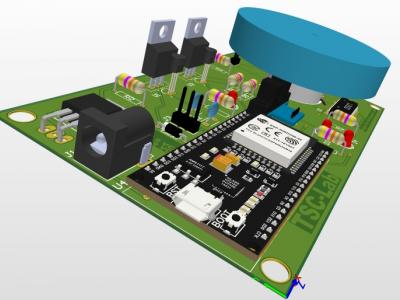Signal Processing

A deep sea video quality dataset with their subjective quality scores.
- Categories:
 296 Views
296 ViewsThe dataset contains the path loss measurements obtained with a LoRa (868 MHz) transmitting radio and five receivers. The receivers move in a search area covering both outdoor and indoor areas wherein a double-slope path loss is experienced. The data can be used to test range-based localization algorithm through the received signal strength.
- Categories:
 484 Views
484 Views
In this appendix, the tested implementation in Matlab of our 2D-TDOA localization algorithm is given for the easier repetition of the obtained results and the future hardware implementation, due to the complexity of the formulas (25)-(31).
- Categories:
 474 Views
474 Views
Using Wi-Fi IEEE 802.11 standard, radio frequency waves are mainly used for communication on various devices such as mobile phones, laptops, and smart televisions. Apart from communication applications, the recent research in wireless technology has turned Wi-Fi into other exploration possibilities such as human activity recognition (HAR). HAR is a field of study that aims to predict motion and movement made by a person or even several people.
- Categories:
 4452 Views
4452 Views
The given Dataset is record of different group people either healthy subjects or subclinical cardiovascular disease(CVD) with history coronary heart disease or hypertension for superficial body features, original photoplethysmography imaging(iPPG) signal and characteristics.
The main purpose of the dataset is to understand the relationship between CVD and high-dimensional ippg characteristics.
- Categories:
 761 Views
761 ViewsThe SoftCast scheme has been proposed as a promising alternative to traditional video broadcasting systems in wireless environments. In its current form, SoftCast performs image decoding at the receiver side by using a Linear Least Square Error (LLSE) estimator. Such approach maximizes the reconstructed quality in terms of Peak Signal-to-Noise Ratio (PSNR). However, we show that the LLSE induces an annoying blur effect at low Channel Signal-to-Noise Ratio (CSNR) quality. To cancel this artifact, we propose to replace the LLSE estimator by the Zero-Forcing (ZF) one.
- Categories:
 352 Views
352 ViewsSeveral experimental measurement campaigns have been carried out to characterize Power Line Communication (PLC) noise and channel transfer functions (CTFs). This dataset contains a subset of the PLC CTFs, impedances, and noise traces measured in an in-building scenario.
The MIMO 2x2 CTFs matrices are acquired in the frequency domain, with a resolution of 74.769kHz, in the frequency range 1 - 100MHz. Noise traces, in the time domain with a duration of about 16 ms, have been acquired concurrently from the two multi-conductor ports.
- Categories:
 665 Views
665 ViewsDue to the multi-path propagation and extreme sensitivity to minor changes in the propagation medium, the coda waves open new fascinating possibilities in non-destructive evaluation and acoustic imaging. However, their noise-like structure and high spurious sensitivity for ambient conditions (temperature, humidity, and others) make it challenging to perform localized inspection in the overall coda wave evolution.
- Categories:
 319 Views
319 ViewsThis is a CSI dataset towards 5G NR high-precision positioning,
which is fine-grained, general-purpose and 3GPP R18 standards complied.
The corresponding paper is published here (https://doi.org/10.1109/jsac.2022.3157397).
5G NR is normally considered to as a new paradigm change in integrated sensing and communication (ISAC).
- Categories:
 6456 Views
6456 ViewsThe Temperature and Speed Control Lab (TSC-Lab) is an application of feedback control with an ESP32, an LED, two heaters, two temperature sensors, one direct current motor and an optical encoder as a revolution per minute (rpm) meter. The heater power output is adjusted to maintain the desired temperature setpoint. Thermal energy from the heater is transferred by conduction, convection, and radiation to the temperature sensor.
- Categories:
 13953 Views
13953 Views




